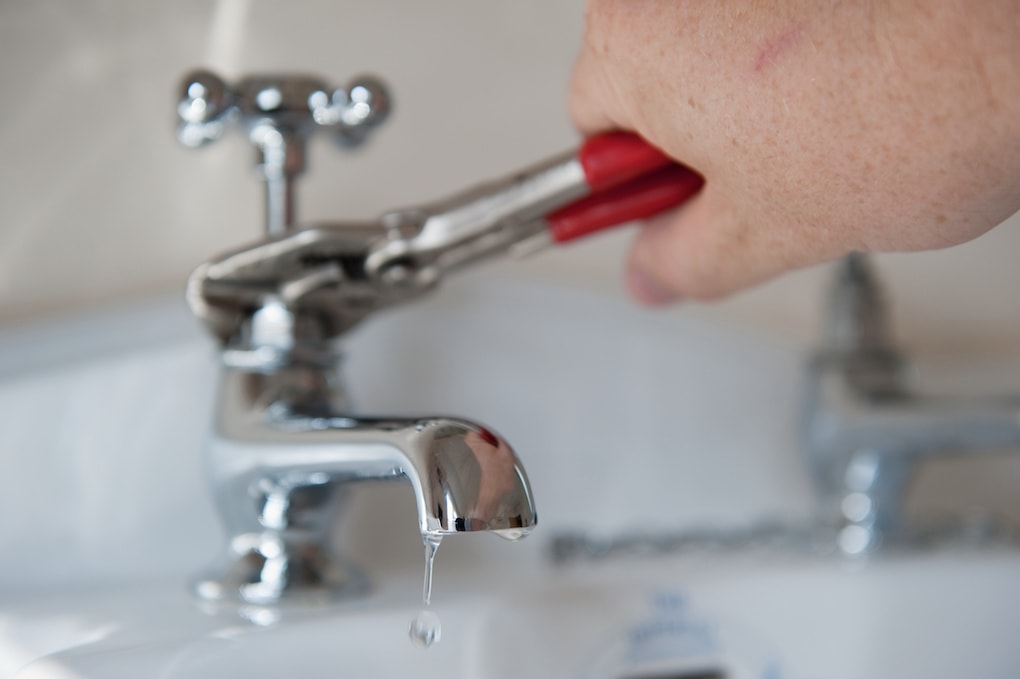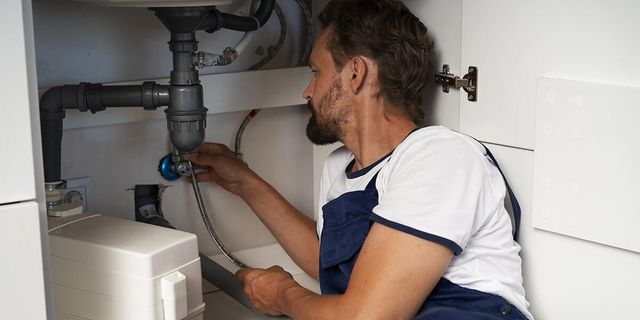Easy Processes to Increase Low Water Pressure in Your Home
Easy Processes to Increase Low Water Pressure in Your Home
Blog Article
The article further down relating to 4 Ways to Troubleshoot Low Water Pressure is relatively interesting. Read it for yourself and figure out what you think of it.

Low tide stress in your house can be an irritating trouble, influencing every little thing from bathing to cleaning dishes. If you're experiencing weak water flow, there are a number of possible reasons and services to explore. In this overview, we'll review typical factors for low water stress and functional steps to deal with the issue efficiently.
Introduction to Low Tide Pressure
Low tide pressure takes place when the circulation of water from your faucets, showers, and various other components is weaker than normal. This can make daily jobs more challenging and less efficient. Recognizing the root causes of low water pressure is crucial to finding the ideal service.
Common Reasons For Low Tide Stress
Faulty Pressure Regulatory Authorities
Stress regulators are in charge of keeping regular water stress in your home. If they malfunction, it can cause low water stress or irregular flow throughout the house.
Metropolitan Water Issues
Sometimes, the issue lies outside your home. Local water issues, such as main line leakages or upkeep job, can temporarily reduce water pressure in your area.
Pipeline Obstructions
With time, pipes can become clogged with natural resource, sediment, or particles, restricting the flow of water. This is a common concern in older homes with galvanized steel pipelines.
Rust
Corrosion within pipes can bring about leakages and minimized water pressure. Rust accumulation can constrict water flow, especially in aging plumbing systems.
How to Diagnose Low Water Stress
Inspecting Pipelines
Inspect visible pipes for indicators of leakages, corrosion, or obstructions. Pay attention to any type of unusual audios, such as banging or rattling pipelines, which might suggest concerns within the plumbing system.
Consulting with a Plumber
If you're not able to identify the cause of low water pressure, consider hiring a specialist plumber to conduct a comprehensive assessment. They can recognize underlying concerns and suggest ideal remedies.
Examining Faucets and Components
Beginning by evaluating the water pressure at various faucets and fixtures throughout your home. If the concern is isolated to details locations, it may suggest local troubles.
DIY Solutions to Take Care Of Low Tide Pressure
Flushing Water Heater
Debris build-up in the hot water heater can restrict circulation and reduce effectiveness. Flushing the container occasionally aids get rid of sediment and maintain ideal efficiency.
Inspecting Stress Regulatory Authority
Guarantee that the stress regulatory authority is operating properly. Changing or replacing the regulator can aid recover appropriate water stress throughout your home.
Cleaning Aerators and Showerheads
Mineral deposits can gather in aerators and showerheads, decreasing water flow. Get rid of and clean up these elements routinely to improve water pressure.
Clearing Up Clogs in Pipeline
For small blockages, attempt using a plumbing snake or chemical drainpipe cleaner to clear obstructions in pipelines. Be cautious when utilizing chemicals and comply with security guidelines.
When to Call an Expert Plumber
If DIY initiatives stop working to fix the problem or if you think significant plumbing issues, it's finest to look for help from an accredited plumber. They have the competence and devices to address intricate concerns safely and efficiently.
Preventive Measures to Maintain Water Stress
Installing a Stress Booster
Think about mounting a stress booster pump to enhance water pressure in locations with consistently reduced flow. This can be specifically beneficial for multi-story homes or residential properties with high-demand components.
Tracking Water Usage
Be mindful of water usage routines and stay clear of ill-using the plumbing system. Easy changes, such as astonishing showers and laundry loads, can help maintain ample water stress.
Normal Maintenance
Arrange regular maintenance for your plumbing system to prevent concerns such as deterioration, leakages, and blockages. Addressing minor issues early can assist avoid more significant repair work in the future.
Final thought
Dealing with low tide stress can be frustrating, however identifying the underlying causes and executing ideal remedies can recover optimal flow throughout your home. Whether it's cleaning up aerators, inspecting pipes, or consulting with a plumber, taking proactive actions can ensure a stable supply of water for your day-to-day demands.
FOUR WAYS TO FIX LOW WATER PRESSURE NOW
Turning on a shower or faucet only to find the water comes out in a sad, slow drizzle is never a good feeling. How exactly are you supposed to wash a pan or take a quick shower when it takes 10 minutes just to rinse off a little soap? The good news is that when your water pressure is bad, there's always a cause: typically one that can be easily fixed. Here are some of the most common causes of low pressure and what you can do to fix the issue:
DEBRIS AND MINERAL DEPOSIT BUILDUPS
If you notice low water pressure from just one or two of the fixtures in your house, the problem likely has to do with debris buildup. Water is full of minerals and other debris, all of which can accumulate in your pipes and on your fixtures. This can cause a blockage that affects how much water flows through. To fix this, try filling a small plastic bag with white vinegar, and use a rubber band to hang it around your showerhead or faucet. Let the head of the fixture soak for a few hours, and the vinegar should loosen the deposits.
WATER LEAKS
Leaks are another common cause of low water pressure. If water is flowing out of your plumbing through a hole or crack before it can reach your fixture, the pressure coming out of the faucet or showerhead will be lower. A plumbing professional is your best bet for finding and repairing a leak in your water supply pipes.
Leaks are another common cause of low water pressure. If water is flowing out of your plumbing through a hole or crack before it can reach your fixture, the pressure coming out of the faucet or showerhead will be lower. A plumbing professional is your best bet for finding and repairing a leak in your water supply pipes.
A VALVE ISSUE
If you have low water pressure throughout your home, check your main shut-off valve to make sure it's completely open. You may also want to see if there's a pressure-reducing valve installed. If there is, have a plumber help you adjust the settings to get the pressure you're looking for.
OTHERS USING WATER
Believe it or not, your low water pressure could be caused by your neighbors. If you notice low pressure at certain times of day, it may be because you and the people living next to you have similar schedules - when everyone is showering at the same time, the pressure will be lower in every home. Low pressure throughout the neighborhood may also be caused by an issue with your municipal water supply. If that's the case, call the supplier to see if they're working on the issue.
https://www.rotorooter.com/blog/water-leaking/low-water-pressure-fixes/

Hopefully you enjoyed reading our piece on Low Water Pressure in the House?. Thanks so much for taking the time to read through our blog. Liked our piece? Please quickly share it. Help someone else locate it. Thank-you for your time spent reading it.
Website Report this page